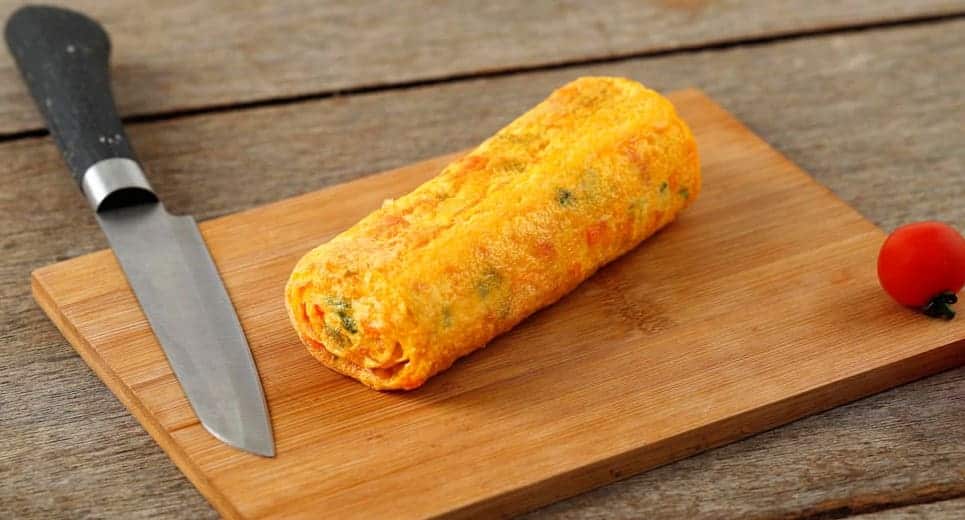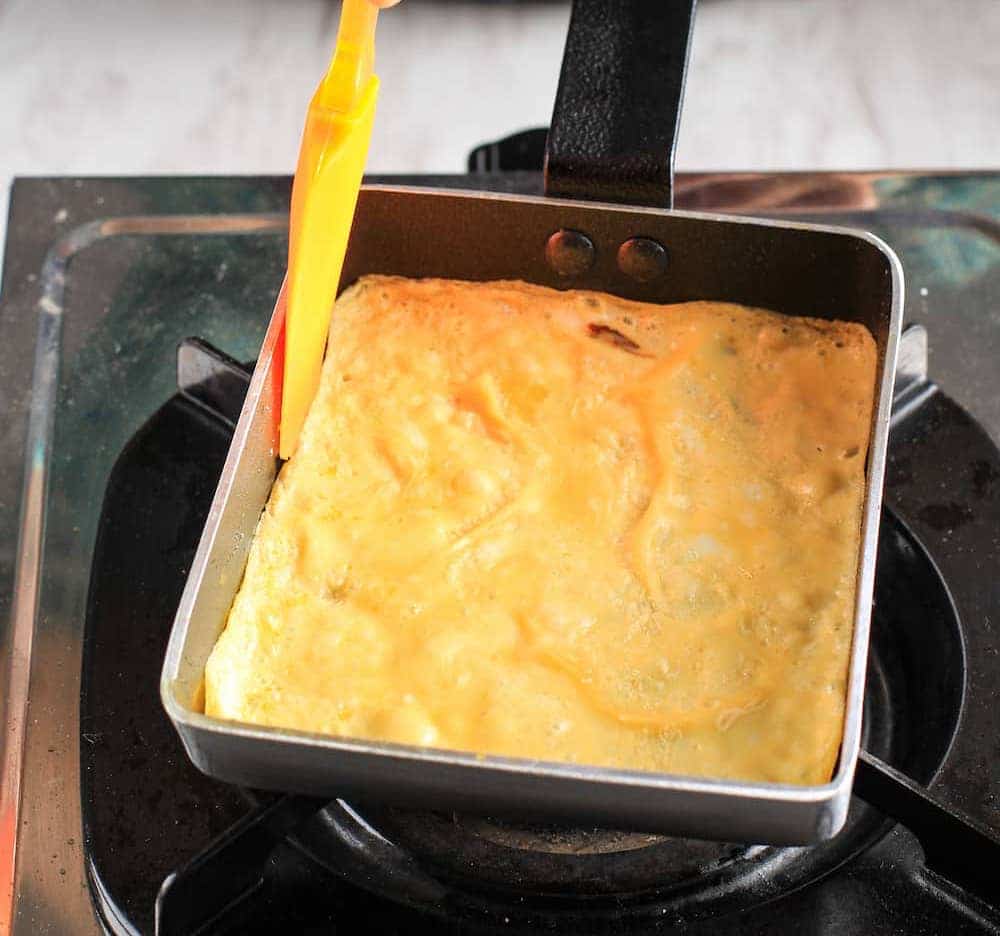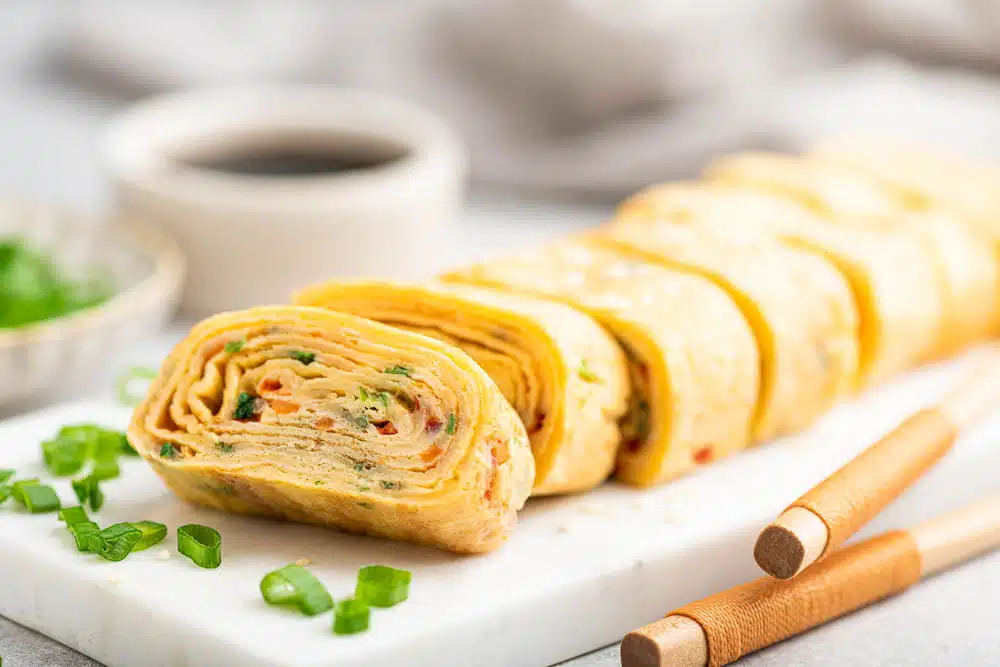Welcome to Paulina Kitchen! Today we invite you to travel to Japan, how are you? But it is not a physical, but gustative trip. We are going to try Tamagoyaki , a Japanese tortilla , which is the Japanese breakfast star.
It is not simply a Japanese omelette , because this dish has its technique, its history and its secrets. But here we are to tell them all.
Today we are going to discover what Tamagoyaki is , how it prepares, the tricks to get perfect and with what to accompany it. Of course, in the end we leave you the recipe of Tamagoyaki to do at home .
Ready to get to the work and turn some simple eggs into a jewel of Japanese cuisine ? We go there!
Content table
About Tamagoyaki
Tamagoyaki is a Japanese omelette that is cooked in layers and enroll on itself to form a kind of firm and spongy roll . Its name literally means "grilled egg" and is a basic of Japanese cuisine, present at breakfast, in the bentos (luncheras) and even in sushi restaurants.
Although it is a simple recipe , achieving perfect texture requires technique and patience. Its flavor can be sweet, salty or a combination of both , depending on the region and the ingredients that are added.
In the traditional version, it carries dashi broth, soy sauce and Mirin , which gives it balance of flavor and spongy.

History and origin of Tamagoyaki
Tamagoyaki has centuries of history and it is believed that its origin dates back to the Edo period (1603-1868) , when Japanese cuisine began to refine and the eggs became a popular ingredient. At that time, the technique of cooking beaten eggs in layers was inspired by Chinese recipes and perfected until we became the dish we know today.
Over time, Tamagoyaki won a place in Japan's daily kitchen , being an infallible in the Bento boxes and even in sushi , where it is served as "Tamago Nigiri . Its popularity crossed borders and today is a dish that is enjoyed worldwide.
What is Dashi: the base of Tamagoyaki
Dashi is an essential broth in Japanese cuisine and the key to giving flavor and softness to dishes such as miso soup and the one that summons us today: Tamagoyaki . It is made based on ingredients such as the Kombu algae and the katsuobushi (dry beautiful chips).
Its function in the recipe is to provide depth of flavor and a more juicy texture to the Japanese omelette . If there are no Dashi, substitutes can be used such as soft chicken broth , fish broth , or even water with a touch of soy sauce.

The keys to a good Tamagoyaki
- Sponge texture : The balance between egg and dashi is key for Tamagoyaki to have that perfect softness.
- Sweet or salty : Depending on the amount of sugar and soy sauce, you can customize the taste of the Japanese tortilla.
- Cooking in layers : it is cooking little by little, in fine layers that are folding on themselves.
- Rectangular pan : Although it can be done in a common pan , the traditional version of Tamagoyaki is cooked in a " makiyakinabe ".
- Constant movement : you have to turn it patiently so that the layers adhere well.
- Rest before cutting : this step is key for the Tamagoyaki tortilla to maintain its shape and do not disarms.
- PRECAL PRESENTATION : The Japanese tortilla is cut into slices couples and is usually served with a bit of grated Daikon radish
7 keys to prepare the best Japanese tortilla
- Beat the eggs without overbatir: eggs must be bathed well but without too foam.
- Add Dashi (or broth), soy sauce and Mirin: these ingredients allow Tamagoyaki to have a juicy and spongy texture.
- Cook over soft heat: you have to maintain a medium-low heat and oil the pan between each layer. If the heat is too strong, it will brown too fast and will not be uniform.
- Roll up with patience and softness: the trick is not hurried. You have to cook layer by cape and roll up smoothly, helping with sticks or a spatula.
- Shape it as it is rolled: if there is no rectangular pan, you can wind the four tips as if it were a package, to give it the typical shape.
- Add vegetables to the mixture: Once practice is acquired with the preparation of Tamagoyaki, well -chopped vegetable pieces can be added to the egg, to provide texture and flavor.
- Wrapped for rest: this step is important so that the first cut is not disarmed. A good option is to wrap the Tamagoyaki omelette with kitchen paper to absorb excess oil.
Follow on Instagram ( here )
and on YouTube that I upload new recipes every week ( click here )

Tamagoyaki recipe
Yields: 2-3 portions
Preparation time: 15 minutes
Ingredients
- 4 eggs
- 2 tbsp. Dashi (can be replaced with chicken or fish broth)
- 1 CDA. of sugar
- 1 CDA. soy sauce
- 1 CDA. from Mirin (or sweet white wine)
- Optional: red pepper, green and scallion, all well chopped.
- Vegetable oil for pan
How to do Tamagoyaki step by step
- Beat the eggs gently until you integrate whites and yolks without forming foam. Add the Dashi, the sugar, the soy sauce and the Mirin. If the vegetables are going to be used, add them in this step well chopped.
- Heat a pan over medium low heat and grease with a little oil, removing excess with absorbent paper.
- Pour a fine layer of the mixture into the pan and cook until the egg is almost curdled. With a spatula, roll from one end to the other carefully.
- Show the roll to one end of the pan. Grease again if necessary. Pour another egg mixture layer, slightly lifting the roll so that the raw egg extends below. Cook and repeat the rolled process.
- Continue this procedure in layers, about 4 to 5 times, until you finish with the entire mixture.
- Pour another mixture layer and repeat the process, making approximately 4 or 5 layers, until the egg mixture ends.
- Remove the Tamagoyaki from the pan and wrap it in cooking paper to maintain its shape. Let stand for a few minutes.
- Cut into slices and serve lukewood or ambient temperature.






